The soybean plant grows for only one season and can grow up to 1.5 meters high. The soybean plant, also known as soyabean or soya, is native to Northeast China. In terms of oil seed production and consumption worldwide, soybeans are the most common. Corn-like conditions are used to grow soybeans. In addition to making oil, biofuel, and crayons, soybeans are also used to make food. In terms of production, it is comparable to corn.
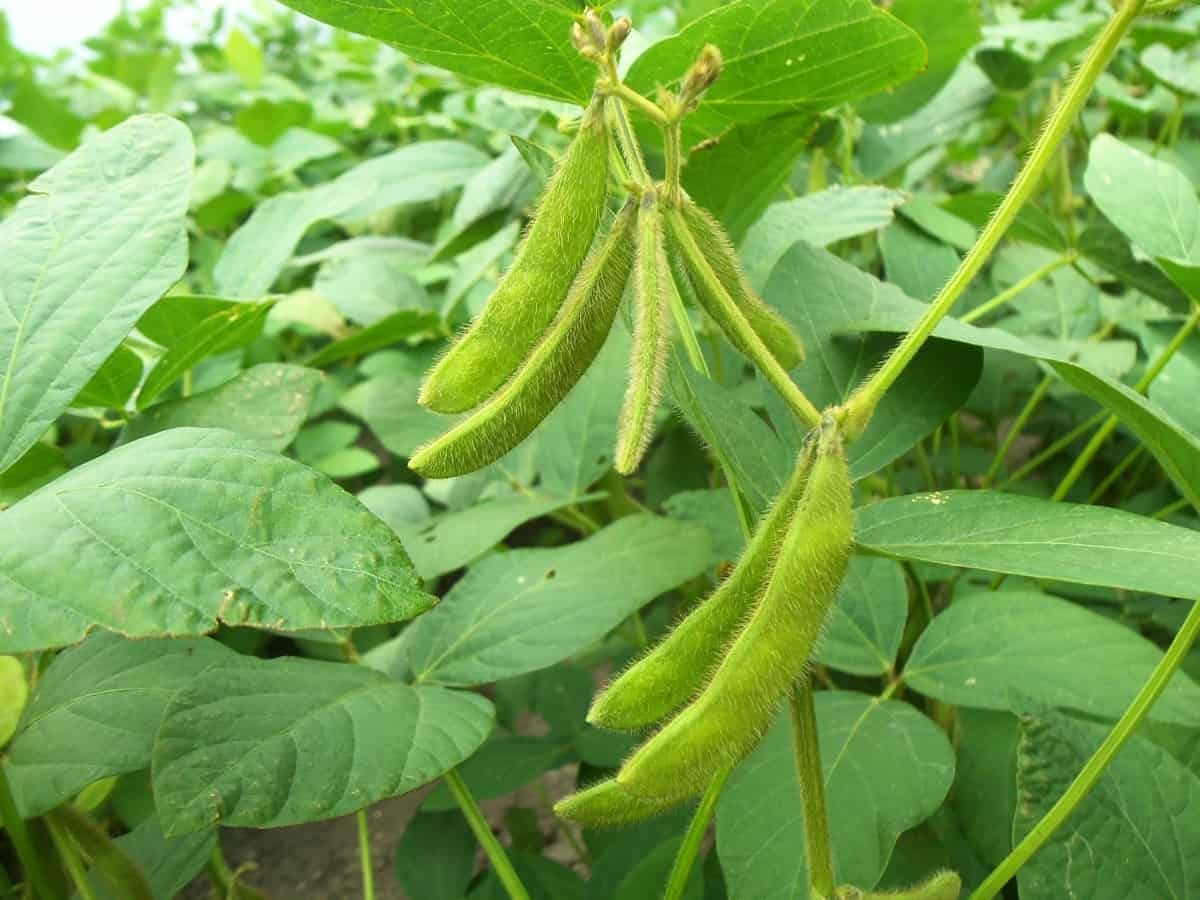
Usually, soybean plants are erect bushes with woody stems and alternately arranged leaves. Leaves can grow 3 to 10 cm long and have three oval or lance-shaped leaflets. Soybean plants produce white or purple flowers and long, curved seed pods 3-15 cm long. They come in many colors, including yellow, green, brown, black, and mottled combinations.
The soybean crop is susceptible to various diseases and pests. Potential yield loss related to a disease or pest infection can be minimal depending on the disease, the environment, the time of infection, and the soybean product. The following are the common pests and diseases in Soybean crops.
Pest and disease management in Soya
Pests in Soybean crop
Cutworms
There are several species of cutworms, all of which have a wide range of hosts, including soybeans. Cutworms often overwinter as pupae in the soil or as young larvae. Weedy and late-planted fields are more likely to be infested with cutworms. Young cutworm larvae feed above ground during the night or on cloudy days. Plants are usually cut above, at, or below ground level by older, larger worms.
Cutworm identification
- When fully grown, they measure about two inches long and are smooth with very few hairs. When disturbed insect curls into a tight ‘C’ shape.
- Species can vary in appearance and color, including brown, tan, pink, green, gray, or black.
- The color of some cutworms is uniform, while the color of others is spotted or striped. The appearance of some larvae is dull, while that of others is glossy.
Damage symptoms
- Cutworms attack crops at all growth stages despite their preference for young seedlings. During the emergence of seedlings and weedy fields, high numbers of caterpillars can cause severe damage.
- Small irregular holes are left on tender leaves by caterpillars that feed near the ground on weeds or maize.
- Their older counterparts burrow into the soil to avoid daylight and emerge at night to feed. Young plants can be dragged underground.
- These worms can cut roots at ground level, damaging the growing tissues, impairing growth, or causing death. The cutworms can burrow into the stem, resulting in the wilting and lodging of older plants.
Biological control
- Natural enemies of cutworms include predaceous or parasitic insects, mammals, parasitic nematodes, pathogens, birds, and reptiles.
- The hymenopteran (wasp) parasites, including ichneumonids, chalcids, braconids, and sphecids, are the essential group of cutworm natural enemies.
- Predaceous beetles often found under bark and tachinid flies are also factors in biological control.
Chemical sprays
- Chlorantraniliprole is a Foliar application used with an effective adjuvant for best performance. Use higher application rates within this range for heavier infestations, larger or denser crops, or extreme environmental conditions such as rainy weather or high temperatures.
- Spray carbaryl 50 WP at 2.5 kg/ha or quinalphos 20 EC at two lit/ha or Phoshalone 35 EC at 1.25 lit/ha
In case you missed it: Soyabean Cultivation Project Report, Crop Economics
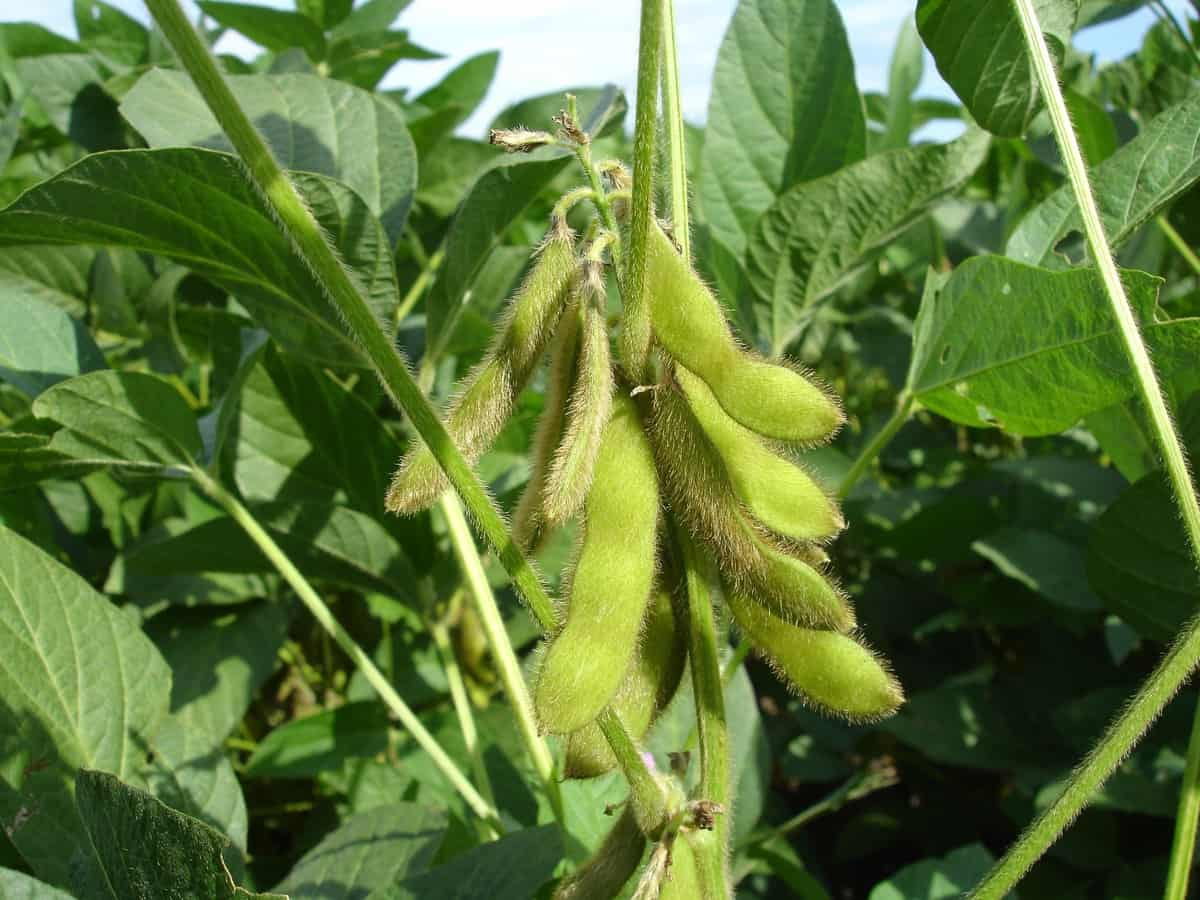
The bean leaf beetle
Bean leaf beetles (BLB) are common soybean pests that feed on cotyledons, leaves, and pods. Furthermore, BLB is known to transmit bean pod mottle virus from plant to plant as it feeds. The first-generation and overwintering adults can introduce BPMV into the field from weedy alternate hosts, and the second-generation can spread it even further. Infections early in the growing season may have a greater impact on yields than infections later in the season.
Identification
The beans leaf beetle adults can be yellow, tan, or red and are about 1/4 inches long. An adult insect’s wing covers are marked with a black triangular mark directly behind its thorax neck area. An outer black band extends around the outer edges of each wing cover, with two black spots. Black triangles are sometimes the only markings on the wing covers
Biological control
- The tachinid flies Calatoria diabroticae (Shimer) is the bean leaf beetle’s most common parasitoid enemy. However, under most circumstances, it is difficult to detect it when it attacks the adult stage.
Chemical control
- An initial insecticide application should be made against overwintering Bean leaf beetle as soon after crop emergence as possible when Bean leaf beetle adults are first noted. A pyrethroid insecticide should be used because it offers longer control against new adult insects that might arrive later.
- Whether an insecticide seed treatment can control overwintered beetles in the spring in place of the first foliar application is debatable but may be worth attempting. A second insecticide application, again with a pyrethroid insecticide, should be made at the first sign of the first generation in July.
Soybean stem borer
Soybean stem borer is also commonly referred to as Dectes stem borer. It is a small, long-horned beetle whose larvae attack soybean and other hosts, including sunflower, giant ragweed, and cocklebur. If they lay their eggs on a soybean plant, they are often placed in the leaf stalk that the adult chews. It often wilts the plant and leaves behind a red-colored scar. When the eggs hatch, the larvae feed within the stalk and eventually make their way to the plant’s main stem.
Identification
- Adult beetles are gray to bluish-gray and 3/8 to ¾ inches long. Antennae are longer than the body, about 1 inch long, and have alternating light and dark gray bands.
- When mature, larvae are about 1/2 – 5/8 inches long and of a cream color
- They have an accordion-like body shape related to how the segments are attached; they grow wider near the head and narrow at the tail. The eggs are tiny and white.
Damage symptoms
- Then the eggs hatch and the larvae will bore into the stem, feeding on the pith. Larvae are cannibalistic, so there is only one larva per stem.
- There is minimal yield loss caused by larval stem feeding. Stem damage could be confused with symptoms of brown stem rot.
- As the larvae mature, they hollow out the interior of the stem to create an overwintering chamber. Overwintering chambers create weak locations on stems that are more likely to lodge plants. As a result of this lodging, harvesting can become difficult, and yield loss can be significant.
- The beetles fly away or fall to the ground, feigning death when approached. After the beetles lay eggs on the stem, the leaf will eventually wilt and die.
Chemical control
- Spraying Neem seed kernel extract controls stem borer
- Spray any one of the following insecticides
| Chemical compound | Dosage/hectare |
| Acephate 75 % SP | 600 -1000 Grams |
| Carbofuran 3% CG | 125 Kg |
| Carbosulfan 6% G | 16.7 Kg |
| Chlorantraniliprole 18.5% SC | 150 ml |
| Chlorpyriphos 20% EC | 1.25 Liter |
| Fipronil 5% SC | 1000-1500 Grams |
| Thiacloprid 21.7% SC | 500 grams |
Biological control
- Natural predators and parasitoids are numerous and include several species of ants, beetles, grasshoppers, flies, wasps, nematodes, mites, earwigs, birds, dragonflies, damselflies, and spiders.
- Five to six releases of the egg parasitoid Trichogramma japonicum (100,000/ha) starting 15 days after planting can be planned.
- Treatments include applying products containing bacteria and fungi that affect the larvae before they penetrate the stem.
Soybean aphid
As eggs, soybean aphids overwinter on buckthorn. After two generations of wingless insects are produced in the early spring, a winged generation leaves the buckthorn and searches for soybeans. Aphids on soybeans are mainly females that give birth to live young females during summer. After maturing for 5-7 days, these female nymphs produce their own young. During a season, live births can result in 15 generations.
In case you missed it: Pest and Disease Management in Beetroot: Causes, Symptoms, Chemical, and Biological Control
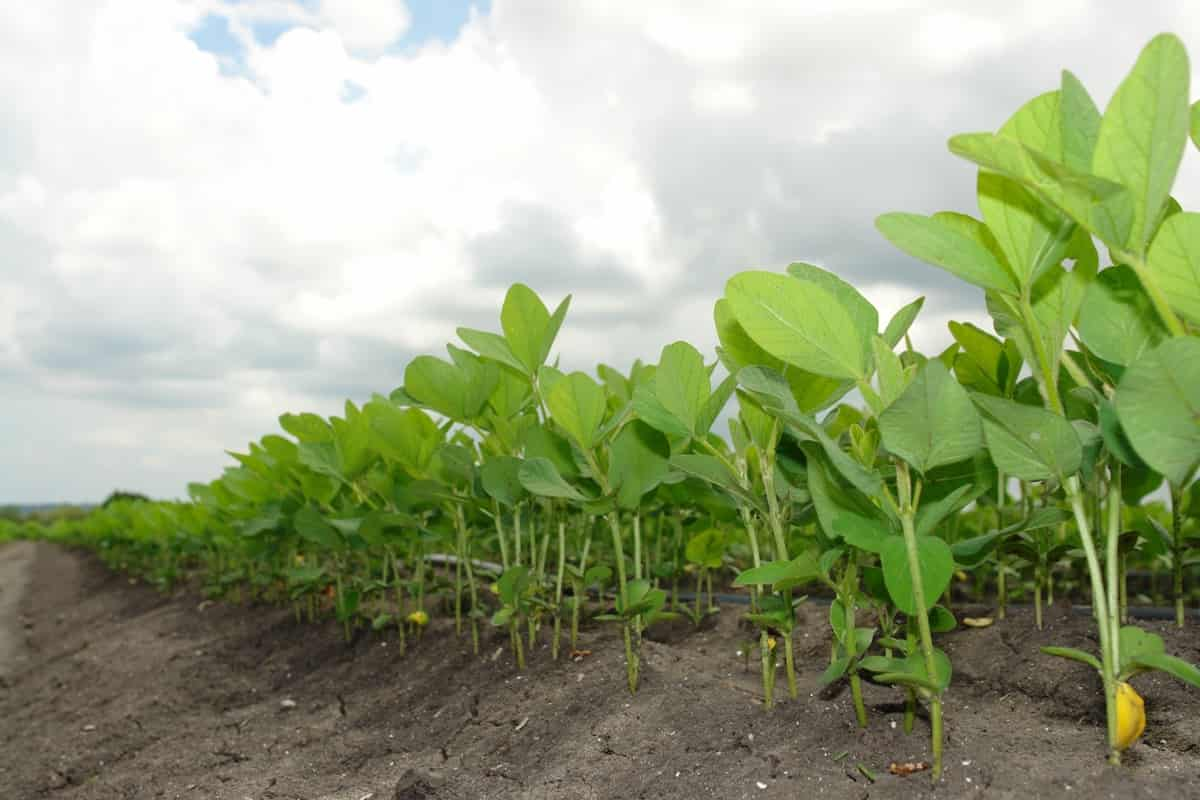
Identification
- Pear-shaped bodies (1/16-inch long).
- There are black cornicles, also known as tailpipes, at the end of the abdomen.
- The mouthparts for piercing and sucking are tucked under the head.
- Several morphs are possible in soybean, including wingless and winged.
Damage symptoms
- Wilted or curled leaves indicate an infestation.
- Soybean aphids feed by sucking plant juices with needle-like mouthparts. Large numbers of aphids may reduce plant vigor and growth rates, cause leaf puckering, decrease pod/seed counts, and ultimately reduce yield.
- Stress is most likely to occur during these stages for blooms and young pods. Less-than-optimal growing conditions also exacerbate the damage caused by aphid feeding.
- During feeding, aphid honeydew contributes to the development of sooty mold on leaf surfaces, reducing the leaves’ photosynthetic activity.
Biological control
- The best defense against aphids is to look out for natural enemies such as lady beetles, green lacewings, insidious flower bugs, aphid mummies, woolly aphids, and other insect predators. Predators and parasitoids may control low or moderate aphid populations. The presence of lady beetles on soybean plants is often a good indicator of soybean aphids.
- Soybean aphid populations are regulated to varying degrees by several beneficial organisms. When scouting soybean fields, Asian ladybird beetles and minute pirate bugs should also be noted.
Chemical control
- Collect and destroy larvae and beetles by hand
- Several insecticides are labeled for soybean aphids. Pyrethroids have a relatively long residual and work best.
- Organophosphates have a fuming action and may work well in heavy canopies or high temperatures
- Apply cow dung ash and spray of clay suspension as asphyxiants in a small area with and low incidence of sucking insects.
- When the crop reaches 35-40 days of age, spray 0.05 % quinalphos 25 EC, Oxydemeton methyl 25 EC, or dimethoate 30 EC at 2ml / lit and repeat as necessary after 15 days.
Whitefly
Whitefly is a major soybean pest. As with aphids, whiteflies have a high reproductive potential and are prone to developing resistance to insecticides quickly. These two factors have made whiteflies an important pest in greenhouse plants, commercial vegetables, and cotton in the past. There are several whitefly species, but the one most commonly associated with soybean is the sweet potato whitefly, Bemisia tabaci.
Identification
- Adults are 1/16 inch in length with four whitish wings and yellowish bodies.
- The wings are roof-like over the body and are parallel to the leaf surface, more or less.
- The adults are easily disturbed when you walk through a field and fly up. Leaf undersides are the food source for nymphs.
- Their bodies are flattened and resemble scale insects.
Symptoms
- Immature and adult whitefly feeds on plant juices
- In the same way as soybean aphids, whiteflies produce honeydew on leaves and other plant parts where sooty mold can grow and inhibit photosynthesis.
- Whiteflies are more likely to be seen on velvetleaf or button weed in soybean fields with heavy weed populations.
Biological control
- Natural enemies of whitefly include small birds, spiders, lacewings, hoverflies, ground beetles, mirid bugs, and damsel bugs.
- The adults and larvae of some ladybirds also feed on whiteflies. For these predators, a perennial border must provide them with year-round habitat.
Chemical control
- Apply carbofuran 3% G at 40 kg /ha or spray any one of the below-mentioned insecticides
- Dimethoate 30 % EC at 1.0 ml/lit.
- Malathion 50 % EC at 1.5 ml/ lit.
Soybean Diseases
Bacterial Blight
In cool, wet weather, bacterial blight is a widespread soybean disease. The disease usually occurs at low levels and does not affect yields. Often, bacterial blight is misdiagnosed as a septoria brown spot. The halo around bacterial blight lesions can be used to distinguish the two diseases. Both diseases can occur simultaneously on the same plants, but bacterial blight typically occurs on young leaves, while brown spots are usually seen on older, lower leaves.
In case you missed it: How to Control Pests and Diseases in Groundnut: Causes, Symptoms, Chemical, and Biological Management
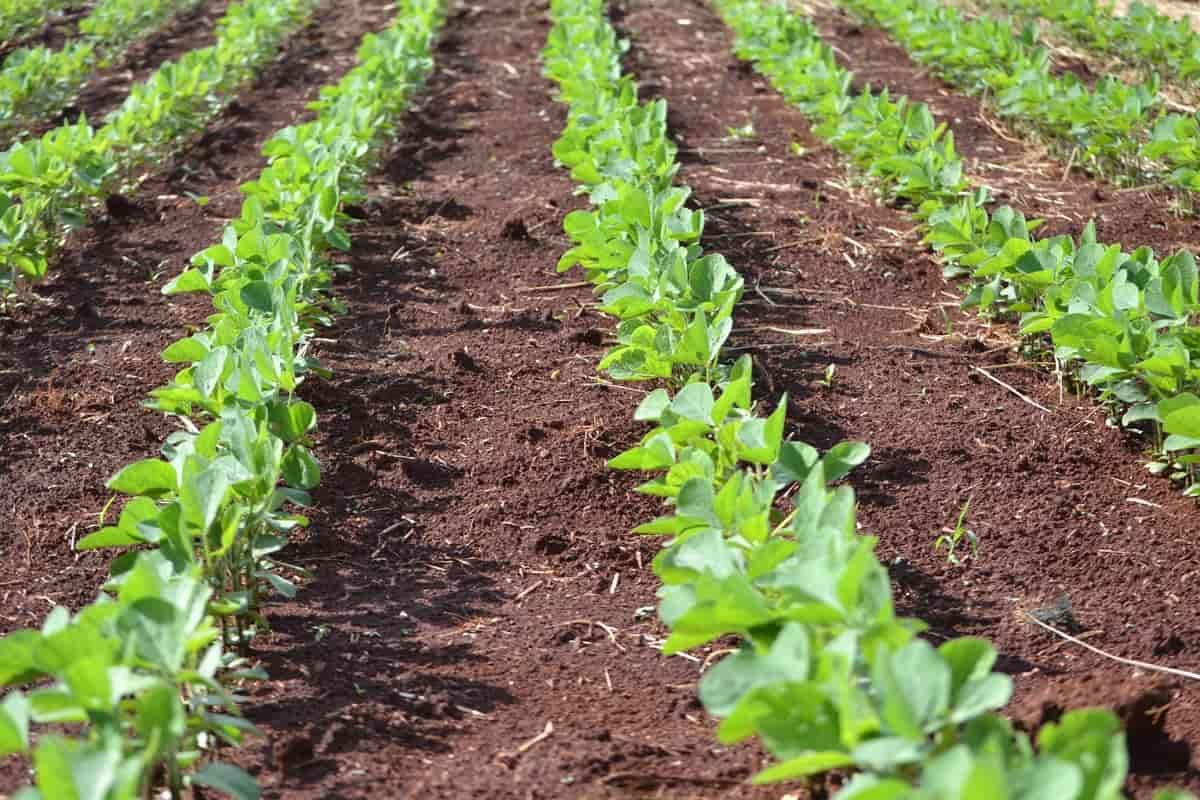
Symptoms
- Late-season symptoms include the formation of angular lesions that range in size from small yellow to brown leaf spots.
- Spots first appear in the mid to upper canopy.
- The center of the spots becomes dark reddish-brown or black when they dry out.
- Yellowish-green halo develops around the spots surrounded by wet tissue.
- The seeds can become shriveled and discolored.
Chemical control and management
- Spray Streptomycin sulfate + Tetracycline combination 300 g + Copper oxychloride 1.25kg/ha. If necessary, repeat 15 days later.
- Two sprays of Copper hydroxide 77 WP at 1.25 kg/ha 30 DAP & 45 DAP. For the control of bacterial blight on soybeans, copper fungicides are recommended. It is important to treat the disease early in its cycle to be effective.
- Plant soybean products with higher resistance or tolerance ratings.
Anthracnose
Soybean anthracnose is a fungal disease that occurs worldwide wherever soybean is grown. In soybeans, anthracnose is caused primarily by Colletotrichum truncatum, but can also be caused by several related species. In addition to soybeans, Colletotrichum species infect alfalfa, velvetleaf, and ragweed.
Symptoms
- Infected leaves can become curled and distorted when very young, with only a portion dying.
- The anthracnose disease usually defoliates plants from the ground up, leaving a rim of foliage undamaged at the top.
- Lesions on the stem, pods, and petioles are brown to black and irregular in shape.
- The leaves roll, and the veins between the major veins are necrotic.
- Infected pods may be filled with mycelium rather than seeds, or the seeds may be fewer and smaller, brown, moldy, shriveled, or normal in appearance.
Chemical control and Management
- Crop rotation to non-host crops is recommended.
- Plant the pathogen-free seed and treat the seed with a fungicide of choice.
- Chlorothalonil, copper sprays containing copper diammonium diacetate, propiconazole, and thiophanate-methyl are the most effective fungicides for control. Chlorothalonil and thiophanate-methyl offer the greatest control. Always follow label directions.
In case you missed it: How to Start Pig Farming in Nigeria: Key Rules, Business Plan, Cost, Profit, and Management
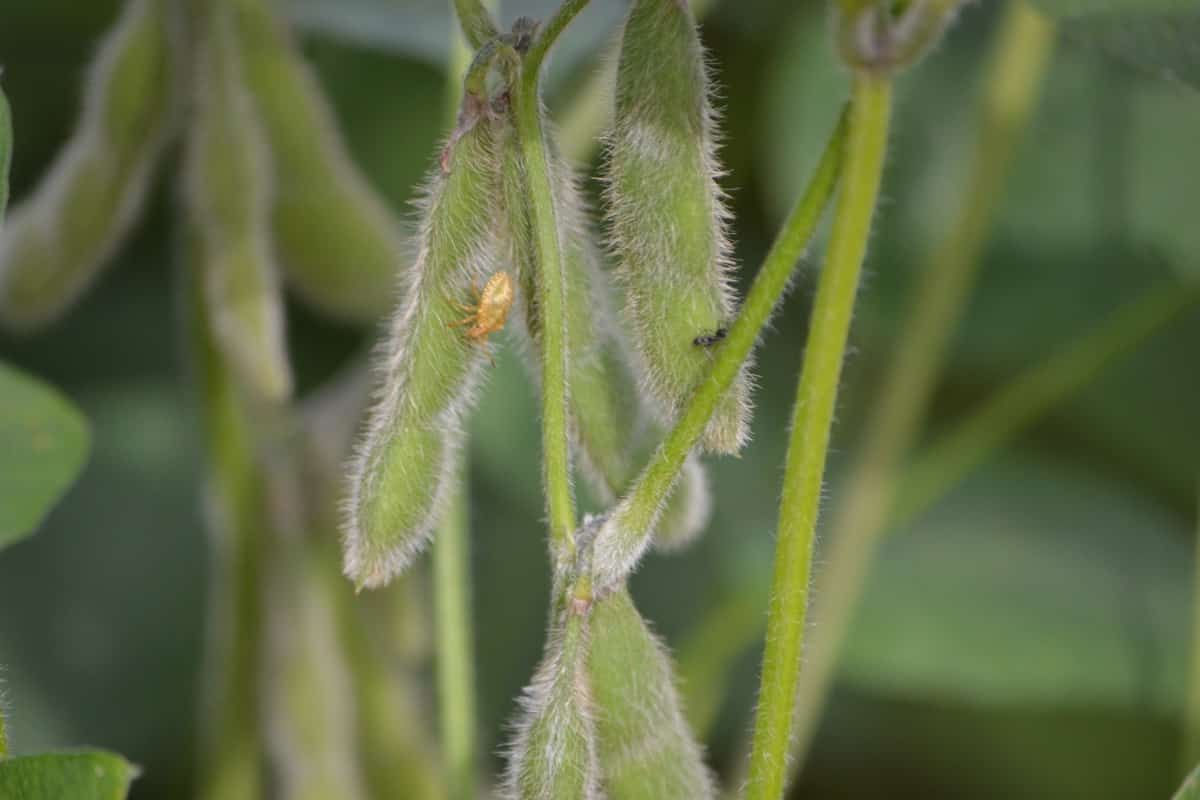
Soybean Mosaic Virus
The potyvirus Soybean mosaic virus causes soybean mosaic. It is much more studied than the bean pod mottle virus and transmitted by aphid species and seeds. Most varieties have less than 5% seed transmission, but BPMV has much greater seed transmission. The Soybean mosaic virus causes yield losses ranging from 8% to 35%. In some cases, losses have reached 94%. Soybean aphids can also transmit the virus. Seed coat mottling caused by Soybean mosaic virus infection reduces oil content, germination, and quality of soybeans.
Disease symptoms
- Infected seeds get mottled.
- Diseased plants are usually stunted with distorted (puckered, crinkled, ruffled, stunted, narrow) leaves.
- The parts are often stunted. Flattened or curved and contain fewer and smaller seeds.
- Infected seeds fail to germinate, or they produce diseased seedlings.
Chemical control and management
- soybean Mosaic Virus management uses virus-free seeds and avoids late soybean planting. So far, neither seed transmission nor aphid levels have been sufficient to cause epidemics in Nebraska.
- Use healthy/certified seeds and keep the field free from weeds.
- Rogue out infected plants and burn them.
- Two foliar sprays of Thiamethoxam 25 WG at 100 g/ha or Methyl demeton 800 ml/ha at 30 and 45 days after sowing to control the vector
Rhizoctonia stem rot
Seedlings are primarily affected by Rhizoctonia root and stem rot, but older plants can also be affected. Lesions may be superficial and have a small impact on plant health, or they can cause plants to die and stunt, resulting in significant yield losses. The fungal pathogen Rhizoctonia infects many plants, but only some types infect soybeans. Herbicides, hail damage, or soybean cyst nematodes may also cause this disease.
Disease symptoms
- The stems and roots near the soil line are covered with rusty-brown, dry, sunken lesions caused by Rhizoctonia infection.
- The lateral roots may be decayed. These infections may cause stunting, yellowing, and wilting in seedlings or older plants.
- Plants may be infected superficially and not exhibit any obvious symptoms, or their stems may be wrapped in the infection, resulting in death or stunting. Plants infected with a virus typically appear in patches in a row or field.
- Several factors can favor the disease, including high soil moisture, warm soil temperatures, soils rich in organic matter, and delayed emergence.
In case you missed it: How to Start Sheep Farming in Nigeria: Business Plan, Breeds, Cost, Profit and Management
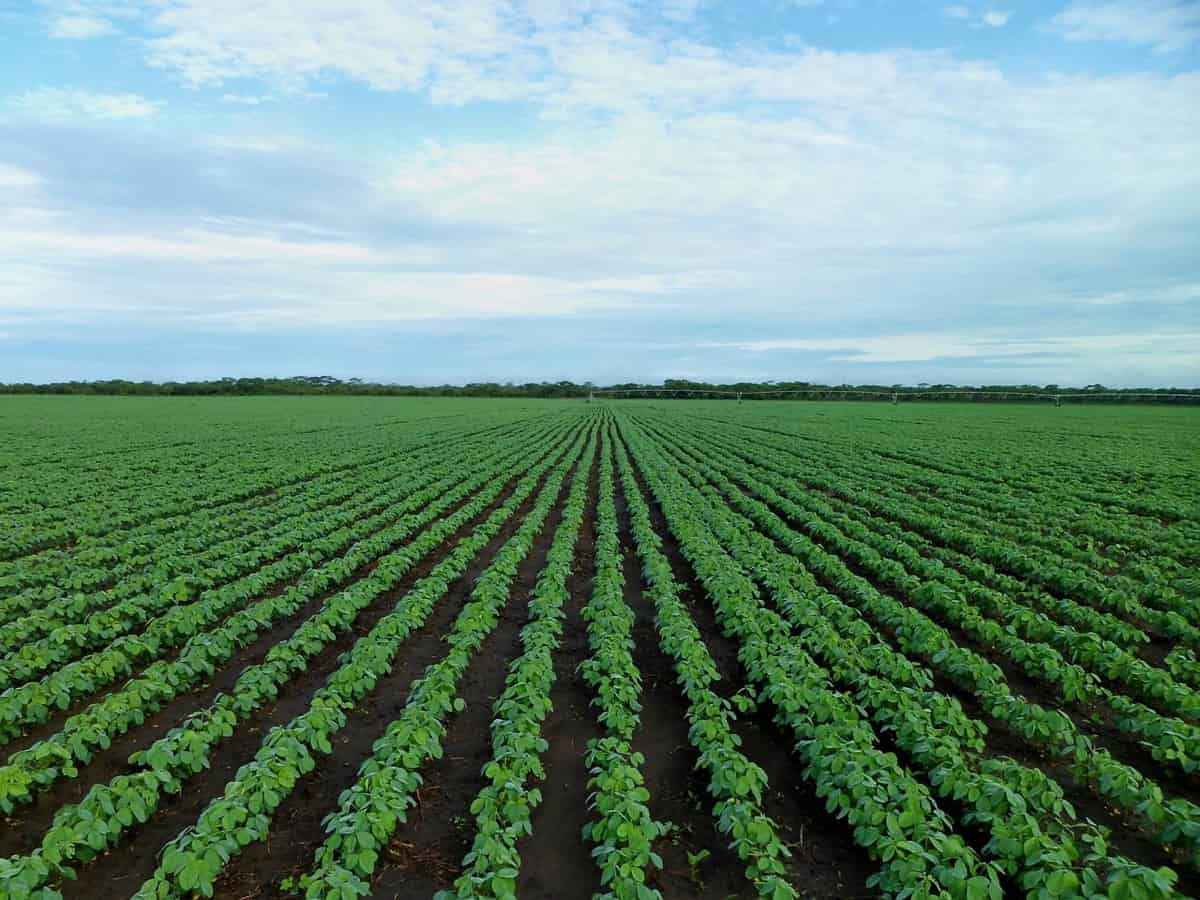
Chemical control and management
- Utilize high-quality seeds and good agronomic practices to promote seedling health.
- Seeds should be treated with an appropriate fungicide before planting. Seed treatments can be applied with mefenoxam or metalaxyl. An antibiotic (Streptocycline) is often used along with copper oxychloride (3 g/l of water) for soil drenching.
- Soybean varieties with lower susceptibility should be planted, and only plants in well-draining soils
Conclusion
Crop damage can be controlled by identifying the damage caused by pests at the early stages. Additionally, staying informed of reported disease developments during the growing season can help one make important decisions to protect yield potential by knowing a field’s disease history.
- How to Make Houseplants Bushy: Effective Tips and Ideas
- Innovative Strategies for Boosting Coconut Pollination and Yield
- Pollination Strategies for Maximum Pumpkin Yield
- The Complete Guide to Chicken Fattening: Strategies for Maximum Growth
- Natural Solutions for Tulip Problems: 100% Effective Remedies for Leaf and Bulb-Related Issues
- Revolutionizing Citrus Preservation: Towards a Healthier, Greener Future
- Natural Solutions for Peony Leaf and Flower Problems: 100% Effective Remedies
- Maximizing Profits with Avocado Contract Farming in India: A Comprehensive Guide
- Natural Solutions for Hydrangea Problems: 100% Effective Remedies for Leaf and Flowers
- The Ultimate Guide to Choosing the Perfect Foliage Friend: Bringing Life Indoors
- From Sunlight to Sustainability: 15 Ways to Use Solar Technology in Agriculture
- The Ultimate Guide to Dong Tao Chicken: Exploring from History to Raising
- The Eco-Friendly Makeover: How to Convert Your Unused Swimming Pool into a Fish Pond
- Mastering the Art of Delaware Chicken Farming: Essentials for Healthy Backyard Flocks
- 20 Best Homemade Fertilizers for Money Plant: DIY Recipes and Application Methods
- How to Craft a Comprehensive Free-Range Chicken Farming Business Plan
- Brighten Your Flock: Raising Easter Egger Chickens for Beauty and Bounty
- How to Optimize Your Poultry Egg Farm Business Plan with These Strategies
- Subsidy for Spirulina Cultivation: How Indian Government Schemes Encouraging Spirulina Farmers
- Ultimate Guide to Raising Dominique Chickens: Breeding, Feeding, Egg-Production, and Care
- Mastering the Art of Raising Jersey Giant Chickens: Care, Feeding, and More
- Ultimate Guide to Raising Legbar Chickens: Breeding, Farming Practices, Diet, Egg-Production
- How to Raise Welsummer Chickens: A Comprehensive Guide for Beginners
- How to Protect Indoor Plants in Winter: A Comprehensive Guide
- Ultimate Guide to Grow Bag Gardening: Tips, Tricks, and Planting Ideas for Urban Gardeners
- Guide to Lotus Cultivation: How to Propagate, Plant, Grow, Care, Cost, and Profit
- Agriculture Drone Subsidy Scheme: Government Kisan Subsidy, License, and How to Apply Online
- Ultimate Guide to Raising Araucana Chickens: Breed Profile, Farming Economics, Diet, and Care
- Bringing Hydroponics to Classroom: Importance, Benefits of Learning for School Students
- Ultimate Guide to Raising Polish Chickens: Breed Profile, Farming Economics, Diet, and Care
- Ultimate Guide to Raising Australorp Chickens: Profile, Farming Economics, Egg Production, Diet, and Care
- Silkie Chicken Farming: Raising Practices, Varieties, Egg Production, Diet, and Care
- Sussex Chicken Farming: Raising Practices, Varieties, Egg Production, Diet and Care
- Homemade Feed Formulations for Livestock: Discover Cost-effective Starter to Finisher Feed Recipes
- 20 Best Pig Weight Gain Supplements: Top Swine Weight Gain Formulas
- Ultimate Guide to Elderberry Farming: Propagation, Planting, Yield, Cost, and Profit